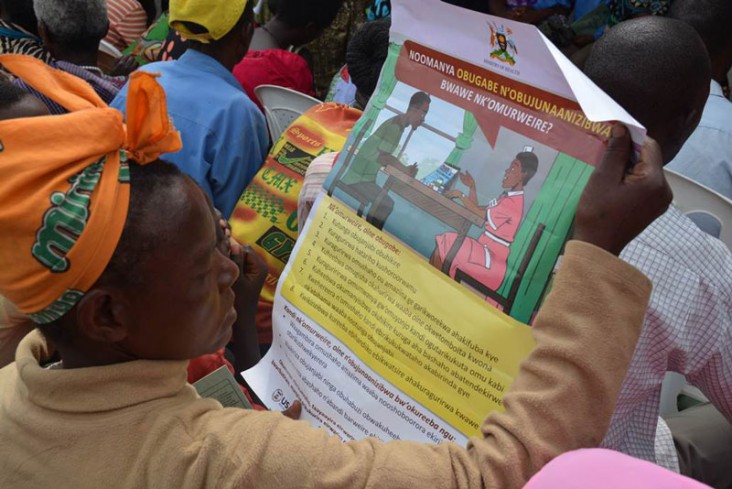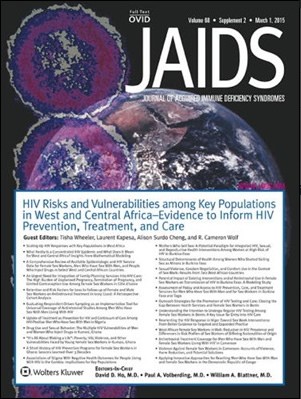- What We Do
- Agriculture and Food Security
- Democracy, Human Rights and Governance
- Economic Growth and Trade
- Education
- Ending Extreme Poverty
- Environment and Global Climate Change
- Gender Equality and Women's Empowerment
- Global Health
- Water and Sanitation
- Working in Crises and Conflict
- U.S. Global Development Lab

December 9, 2016 – Effective health communication helps keep people in treatment throughout the HIV continuum of care, leading to more positive health outcomes, according to a new supplement of the Journal of Acquired Immune Deficiency Syndromes (JAIDS). The 10-article supplement, which launched December 8, highlights the role health communication plays in HIV treatment outcomes and provides a range of experiences from low- and middle-income countries. It is an extension of and follow-up to the 2014 JAIDS Supplement, “Health Communication in HIV Prevention and Care.”

The U.S. Agency for International Development (USAID), through the U.S. President’s Emergency Plan for AIDS Relief (PEPFAR), funded the Health Communication Capacity Collaborative’s (HC3’s) development of the “Impact of Health Communication on HIV Treatment Outcomes” supplement, reflecting the Agency’s support and continued investments in Implementation Science as a cornerstone of improving HIV and AIDS care and treatment around the world.
Health communication is a broad term that applies to the interaction between healthcare providers, policy makers, patients and community members to facilitate an understanding about health risks, prevention methods and services. It is a critical element in HIV and AIDS testing, prevention, care and treatment. Health communication may be used to encourage behavior change and affect HIV treatment outcomes. Effective health communication is also instrumental in reducing losses throughout the HIV continuum of care – an essential step in achieving the UNAIDS 90-90-90 treatment targets.
In an effort to foster multidisciplinary dialogue, advance global knowledge and provide guidance to the field, researchers representing multiple sectors, countries and perspectives contributed their examples of how communication has improved HIV treatment outcomes to the supplement. Important real-world examples from Kenya, Lesotho, Mozambique, Senegal, South Africa, Tanzania and Uganda where health communication made a measureable difference in HIV treatment outcomes were included. Additionally, “Impact of Health Communication on HIV Treatment Outcomes” also features a foundational manuscript that showcases several effective health communication interventions throughout the HIV treatment continuum, serving as an invaluable resource for strengthening health systems across the globe.
As USAID continues to implement “Test and Start” throughout the Agency’s HIV and AIDS programming in accordance with the World Health Organization’s 2015 recommendation, it is clear that health communication will continue to be of the utmost importance in order to get more people tested, on treatment and virally suppressed. HC3’s JAIDS supplement underscores the important role that health communication will continue to play in achieving positive health outcomes for those most in need by supporting them along the HIV treatment pathway.
Learn More
- Discover how USAID contributes to achieving the UNAIDS 90-90-90 targets
- Explore how health communication spurs greater HIV clinic visits in Vietnam
- Read more about USAID’s implementation science investments [PDF, 461KB]







Comment
Make a general inquiry or suggest an improvement.